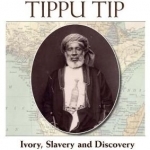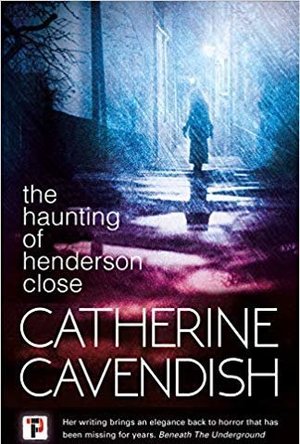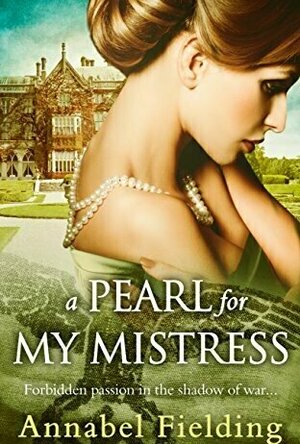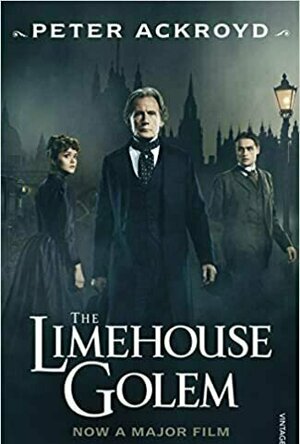Natural Magic: Salted Paper Prints in North America
Jordan Bear, Russell Lord, Lisa Volpe and Keith F. Davis
Book
The salted paper print process and the daguerreotype were invented, for all practical purposes,...

Tippu Tip: Ivory, Slavery and Discovery in the Scramble for Africa
Book
Tippu Tip was chiefly an ivory trader, who pioneered for new sources through present day Tanzania...
History of Dance with Web Resource
Book
History of Dance, Second Edition, offers readers a panoramic view of dance from prehistory to the...
Billie Wichkan (118 KP) rated The Haunting of Henderson Close in Books
May 22, 2019
Hannah has relocated to Edinburgh and now works as a performing tour guide regaling tourists with the goings on in the spooky derelict Henderson Close. Together with colleagues they bring the past to life as they play the parts of real people who lived there and spin tales of the spooky and historical past, some really gruesome. But then she starts to see shadows, she has flashes where she feels weird and, well, has some really rather scary experiences. But she's not alone, one of the other guides has experienced similar and then some of the tourists also start to see things. What is happening? Are the legends and stories of what went before coming back? Who are the people that Hannah keeps seeing, and what do they really want?
I was intrigued by the classification of The Haunting of Henderson Close as a horror, mystery and thriller novel as these are my favourites.
I loved all the hints at ghosts and supernatural activity but sadly it all got a bit confusing for me as it progressed. The flashbacks and present just seemed to clash and not move seamlessly together. At times I felt possibly the author meant for the book to be more of a Victorian mystery rather than supernatural.
The use of location was one of the main strengths of the book, as the descriptions of 19th century Edinburgh were detailed and made it easy to imagine just what Victorian Scotland used to look like; really amazing and descriptive.
The ending I found a bit lacking as I had an idea built u in my of something climatic and it wasn’t.
The story itself intrigued me, the setting especially; all in all, a story that kept my attention nicely throughout and left me mostly satisfied at its conclusion.
My thanks go to the Publisher and Netgalley for the chance to read this book.
BookInspector (124 KP) rated A Pearl for My Mistress in Books
Sep 24, 2020
The characters in this novel are very interesting, sophisticated and at the same time very believable and down to earth. The whole book was mainly told from Lady Lucy’s, Hester’s (the maid) and Sophie’s (Hester’s sister) perspectives. I really liked that author chose multiple perspectives, it allowed me to have a better insight into characters personalities and made the whole story more indulging. My favourite persona in this book was Hester. I liked her simplicity, pureness and adventurous heart.
The narrative of the book is filled with historical knowledge and politics. It was very clearly visible that author has a passion for history and she has done a great research for this novel. For me it wasn't a very easy read, there are a lot of things happening in this novel and a lot of politics involved, because of that I had to keep my concentration going to understand what was going on. However, I really enjoyed all the details which author shared about aristocratic life, their struggles and wish of Independence. I also loved the insight into maids world in that period, as most of the books I read was mostly set in the 19th century, and it was nice to compare how it changed during the time.
The writing style of this book is very rich and elegant, it reflected that particular era very nicely, and I felt the spirit of 1930th through the pages. The chapter length was quite long to my liking, even though it was divided into smaller parts. (Well, what can I say, I love short chapters…) The ending of the book concluded the book really nicely but still left me guessing where life will take Hester. So to conclude, it is a very interesting book about aristocrats and their lifestyle between the wars in England, filled with secrets, manipulations, and fear or support of new regiment. I would strongly recommend this book to all historical fiction readers and people who like politics. Enjoy :)
Was given this book by publisher and NetGalley for an honest review.
BookInspector (124 KP) rated The Limehouse Golem in Books
Sep 24, 2020
The narrative of this novel was very well written and researched. I did enjoy the story which author was sharing with the reader, however, there were many philosophical parts in this book, which I found boring and unnecessary. It reminded me of all the dull books I had to read while in school, so I just skim read those parts. 😦 I would like to throw in a disclaimer, that there are graphic violent parts in this book, and it is not suitable for sensitive readers. 😉
The writing style of this book is impeccable. Peter Ackroyd is a master of his craft and truly gifted writer. This novel was first published in 1994, but it feels like it was written in the 19th century. I could clearly see the author’s knowledge in this book because it was shining through the pages. The language used in this novel was very sophisticated but not very difficult to read, and the chapters where decent length, so it did not leave me bored. I really enjoyed the ending of this novel, I think it was well deserved and rounded up the story very nicely.
The film actually surprised me, it had a completely different approach to the whole story and told it through Inspector Kildare’s perspective. In the book, the whole police investigation was very vague, so it was a real surprise to see this approach, and I didn’t really mind it. The acting was marvellous and Mr D. Booth (Dan Leno) was absolutely amazing. He had the charisma and the skill to be a star of this movie. The whole movie was not a full representation of the book, they used some parts from the book and amended it to fit their story, but I liked it nevertheless. This movie is not suitable for children under 15, as it has some really gross scenes in there.
So to conclude, this book is very well written and amusing read, with well rounded and charismatic characters, and the narrative is twisty and always changing, keeping the reader interested. I do recommend to experience Lizzie’s journey and to watch the film afterwards. They do compliment each other, offering different perspectives and different interpretations, so give it a try and I hope you will enjoy it 🙂

Pride and Prejudice by Jane Austen
Podcast
Austen’s timeless romantic classic, follows the lives of the five Bennett sisters, who live in a...
Suswatibasu (1703 KP) rated Killers of the Flower Moon: The Osage Murder and the Birth of the FBI in Books
Nov 24, 2017 (Updated Nov 24, 2017)
This fantastic book relates to a story covered in blood, racism and greed. Oil, black gold, made the Plains Osage tribe incredibly wealthy. By the 1890's, the remnants of this great people were in the scrub lands of Northern Oklahoma.
Their life was continually harsh, the soil poor. In the late 1890's, by chance, oil was struck in Osage County, flowing in abundance and in great demand. From 1918 to 1928, $202 million was paid to the tribe which by then numbered around 3000, transforming their lives. 680 barrels were obtained in a day in 1920 from a strike at Burbank, angering the whites and thus began the "Reign of Terror" in which hundreds of the Osage tribe members were subsequently killed in the most horrendous display of corruption.
The book itself begins in 1921 with an Osage woman who had a share of the mineral riches to be found under the Osage land. Mollie like others was subject to a law that treated her tribe as juveniles whose estates had to be administered by white guardians, that is local lawyers and businessmen, appointed by local courts.
Guardianship was unpoliced and few records were kept. Fraud was therefore prevalent and many of the local white community participated in corruption - murder was widespread as a result. Mollie's sister, Anna, was the first noticeable murder in which she was shot and killed, launching a major probe into similar killings in the area. Many other murders were committed over the following years, with poisoning as the most common method of killing. Essentially it was a covert form of genocide.
The locals refused to act, partly due to fear or involvement in this heinous plot, so J. Edgar Hoover, who was the first president of the FBI, became involved in the investigation. He sent a tall Texas Ranger called Tom White to scrutinise an epic series of murders in which even investigators were targets.
What follows is not only history but a riveting detective story and the book demonstrates yet again the enormous cost of American nationhood. It provides some fascinating insight into the early workings of the FBI (not least Hoover's nascent megalomania) for whom this was a celebrated case and a valuable reminder for folk who thought the persecution of American Indians ended in the late 19th century. Author and journalist David Grann does a superb job in collating all of the information with dozens of pages solely highlighting attributions and references - it is thorough and well-researched. Therefore it is hardly surprising that Hollywood has snapped up this book to turn it into a major motion picture - let's hope they don't whitewash history once again.

Joan of Arc: The Image of Female Heroism
Book
The fame of Joan of Arc began in her lifetime and, though it has dipped a little now and then, she...





